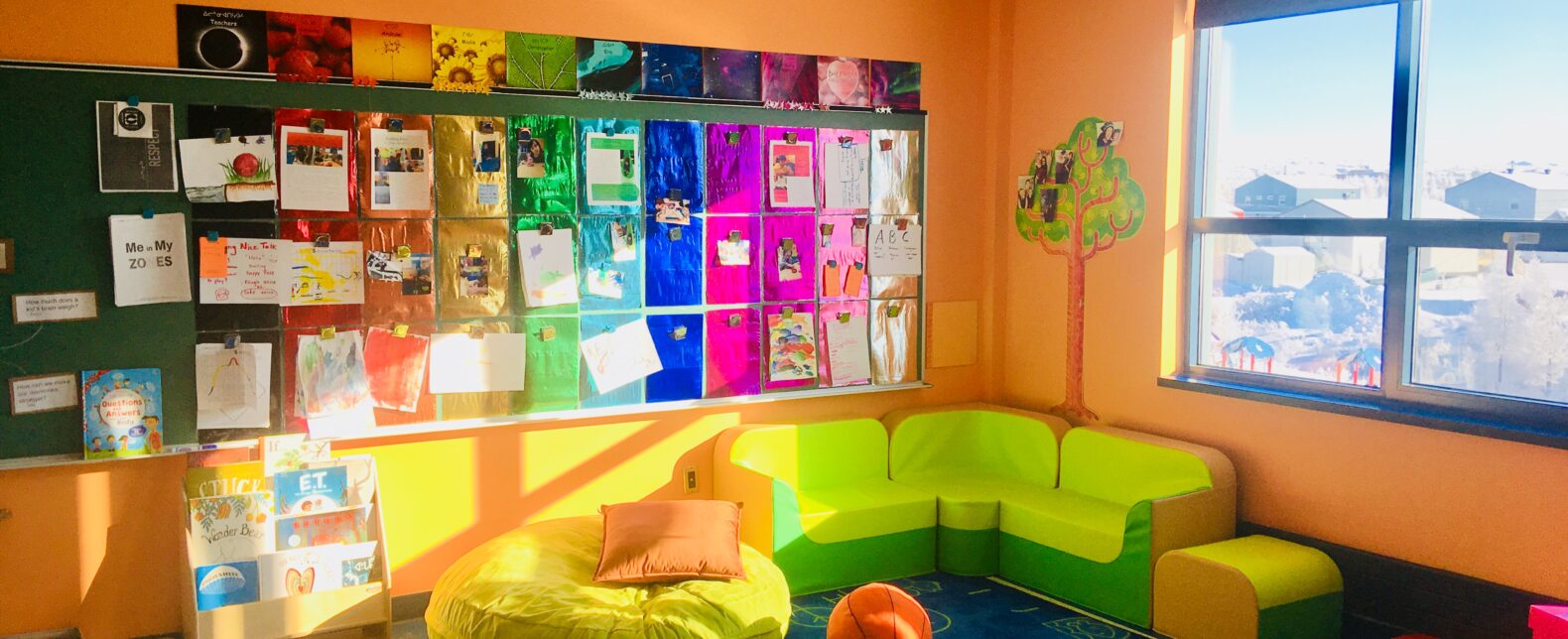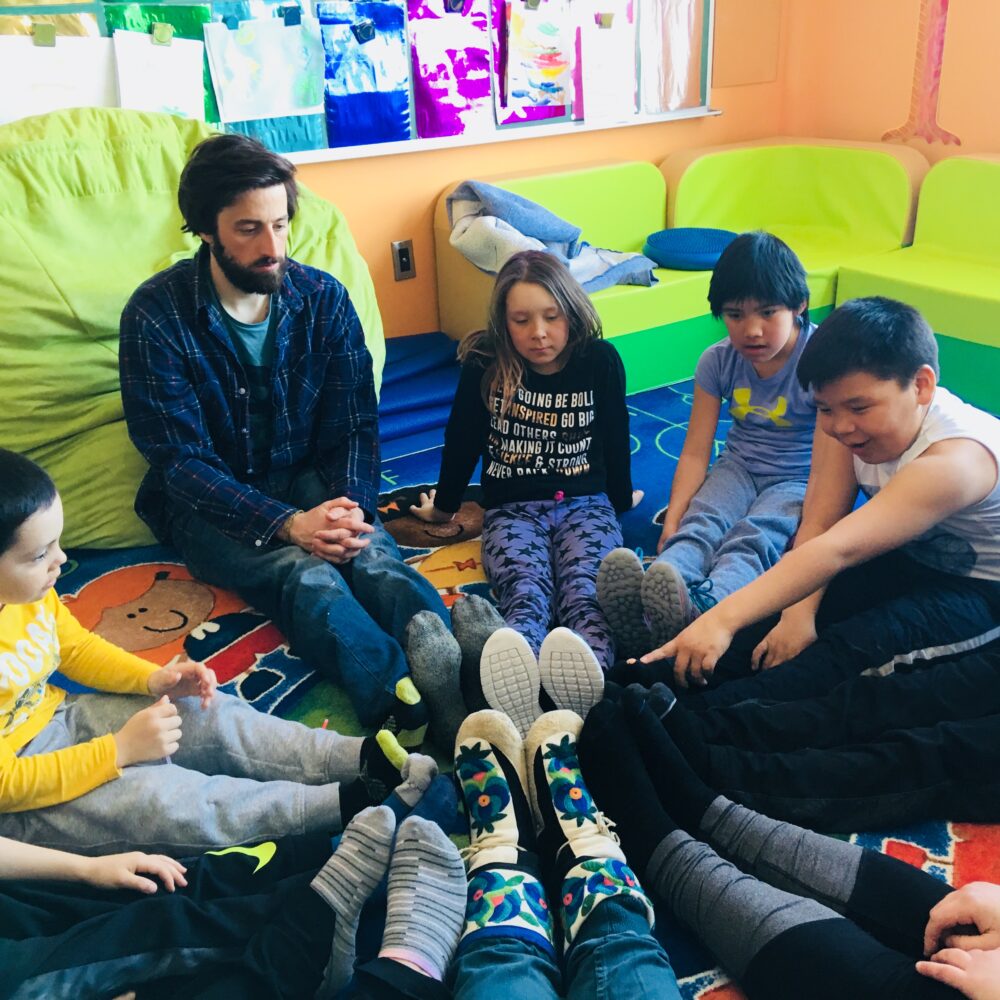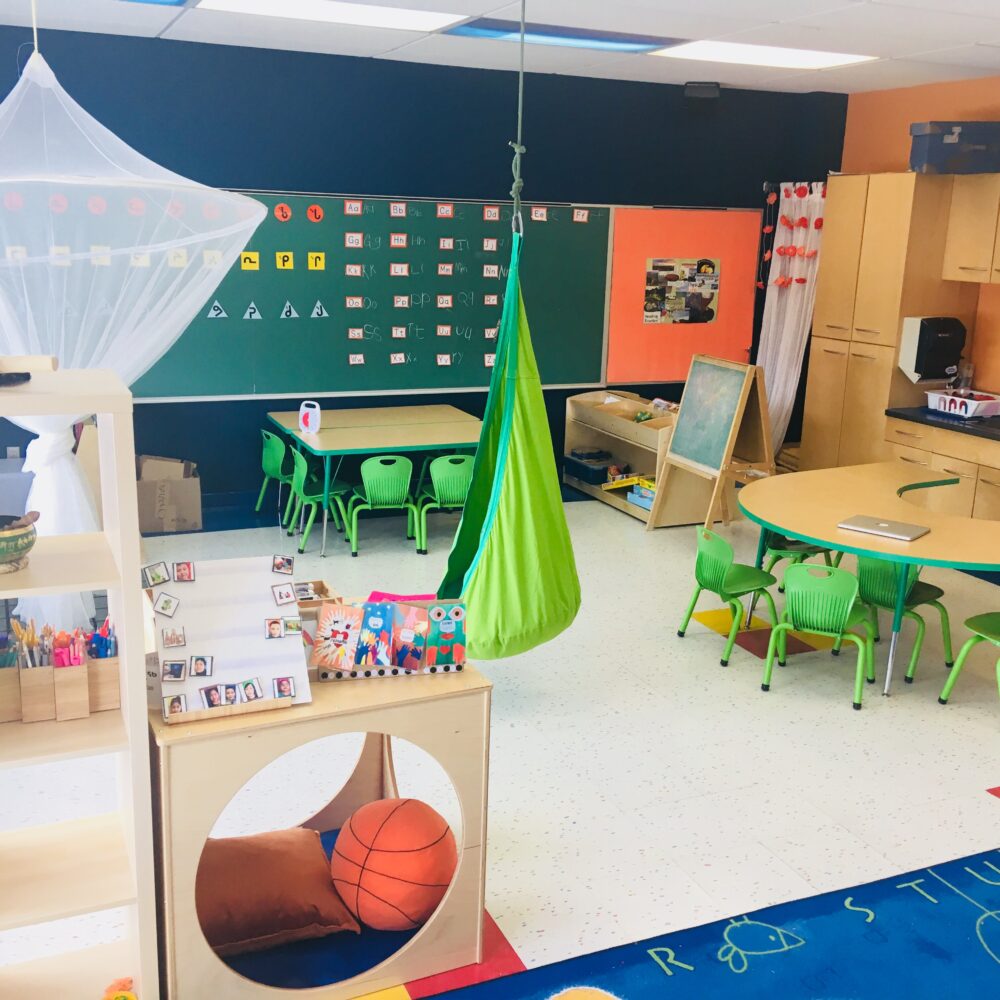Saimautivik brings opportunities for harmony at Pitakallak School

Article written by Jenny McManus
As the smell of tangerine wafts from the diffuser, the beat of the drum brings the group together around the carpet. We celebrate the morning improvising an ayaya song to notice the subtle changes in nature, like the sun shining brighter through our window, recognize student effort and achievement, and strengthen their memory recall. Beaming with pride, the students clap out the number of stars they earned that morning as tokens for following expectations based on our school values of respect (susutsaniq), unity (tatiqatigiiniq), harmony (saimautiniq), and vision (tukimuatsianiq).
Every morning at circle time, we remind ourselves to listen openly, stick together, be peaceful, and dream big with posters on the wall that we made together, hand gestures that silently redirect, and smaller cards to flip to indicate unexpected behaviour. Each student has a colour on the wall for displaying their names, stars and evidence of learning. In the Saimautivik, they find a sense of belonging that nurtures friendships, empathy, and growth.
The Saimautivik, or Harmony room, is a social and emotional learning space at Pitakallak School in Kuujjuaq. Spearheaded by Jenny McManus, the compassionate school teacher, it provides a home base for a nurture group, social skills groups, and extracurricular activities. Nurture groups are inclusive interventions for students that the Boxall profile (an online assessment tool used to measure the social and behavioural difficulties of children and young people) identifies as having delays in social, emotional, and behavioural development who are struggling to flourish in the regular classroom environment due to acting out or withdrawing. Through the security of routine and predictability, caring adults who model positive relationships, clearly and mutually defined expectations, food sharing, opportunities for hands-on and paper-based numeracy and literacy, and engaging activities that are developmentally appropriate, the students make great gains in their development in a short period of time. Using tools that Compassionate Schools and Complementary Services promote such as the Zones of Regulation, Transformative Life Skills for using action, breathing and centering to relieve stress, and other trauma-informed approaches, the targeted interventions are supporting growth and change on a school-wide level.
Teachers, families, and the students themselves share stories of increased confidence, wider social circles, and greater academic achievement. Since the introduction of the intervention half way through this school year, the SWIS (school-wide information systems) data informs that behavioural referrals have been reduced by half. The Saimautivik brings together teachers and support staff to provide evidence-based practices to support our students in need and experiment with new directions in learning.
As a traditional Inuit value, harmony brings peace between people, agreement between ideas, and understanding replaces conflict. Harmony also hints at the union of colours in the room and light table, the euphony of the sounds of the drum and ayaya songs, the melding of textures and smells; the social aesthetics of harmony are made concrete through a carefully crafted environment and chosen materials.
Before, rejected furniture and random supplies accumulated in this unused classroom; students would hide there when escaping their responsibilities. With its physical transformation, it now challenges the traditional concept of a classroom and the role of a teacher – rows of desks reminiscent of industrial era assembly lines all facing the knowledge keeper.
A classroom can be warm and inviting, a hybrid between school and home with comfortable spaces for gathering and calming down, tables for sharing meals or collaborative projects, and nooks for using hands-on materials. The Saimautivik’s bright colours incite play and creativity, yet its organization supports the daily routines, determines serious and focused study, and expects children to be independent in setting the pace and direction of their own learning. We look forward to developing our approaches critically, sharing our success stories with others, and hopefully recruiting more staff that are eager to bring harmony to our schools and communities.

